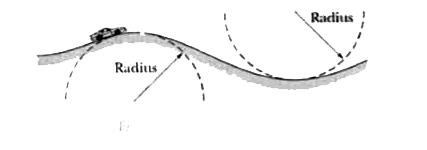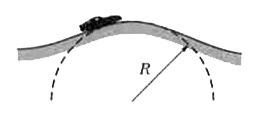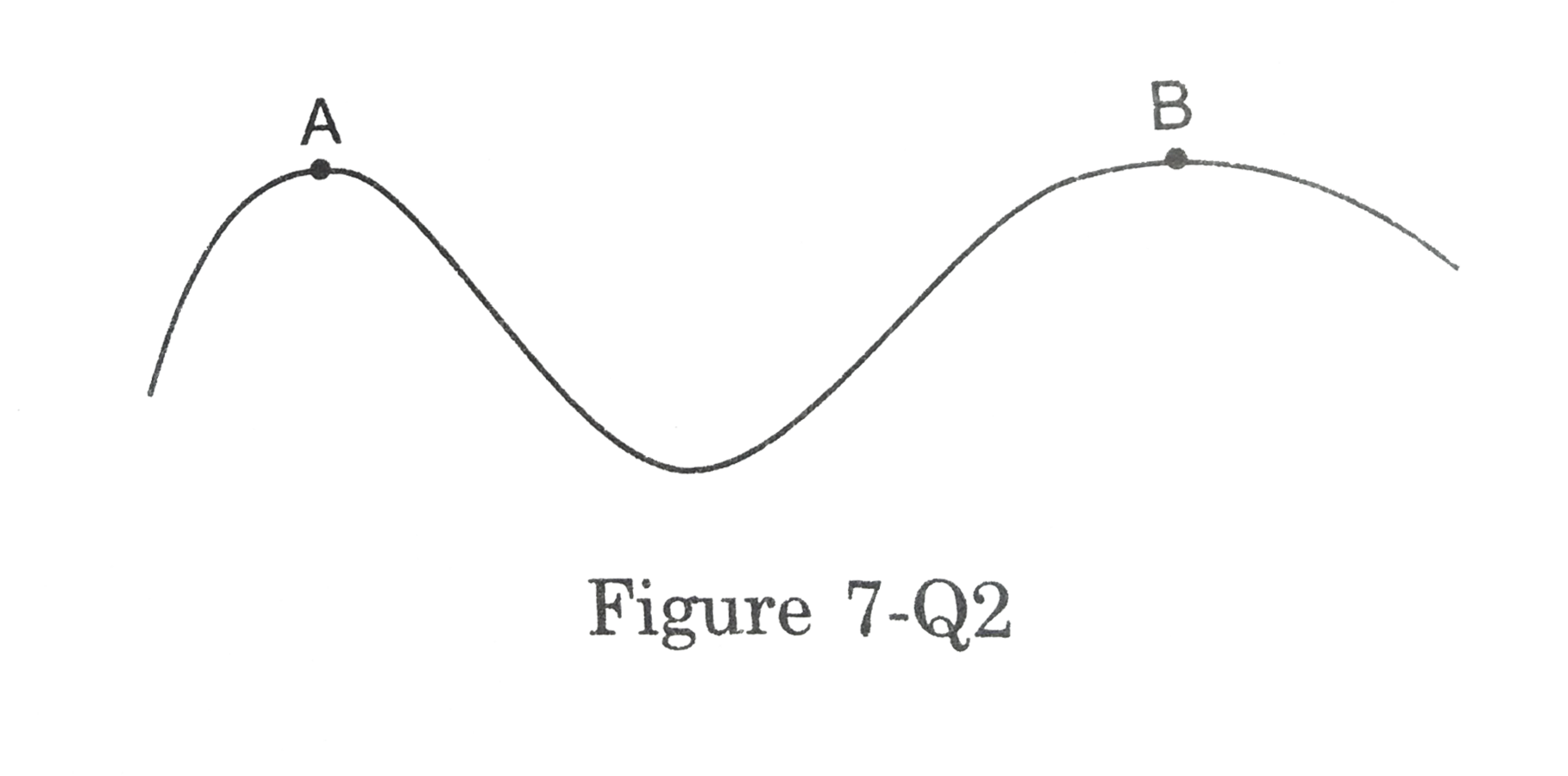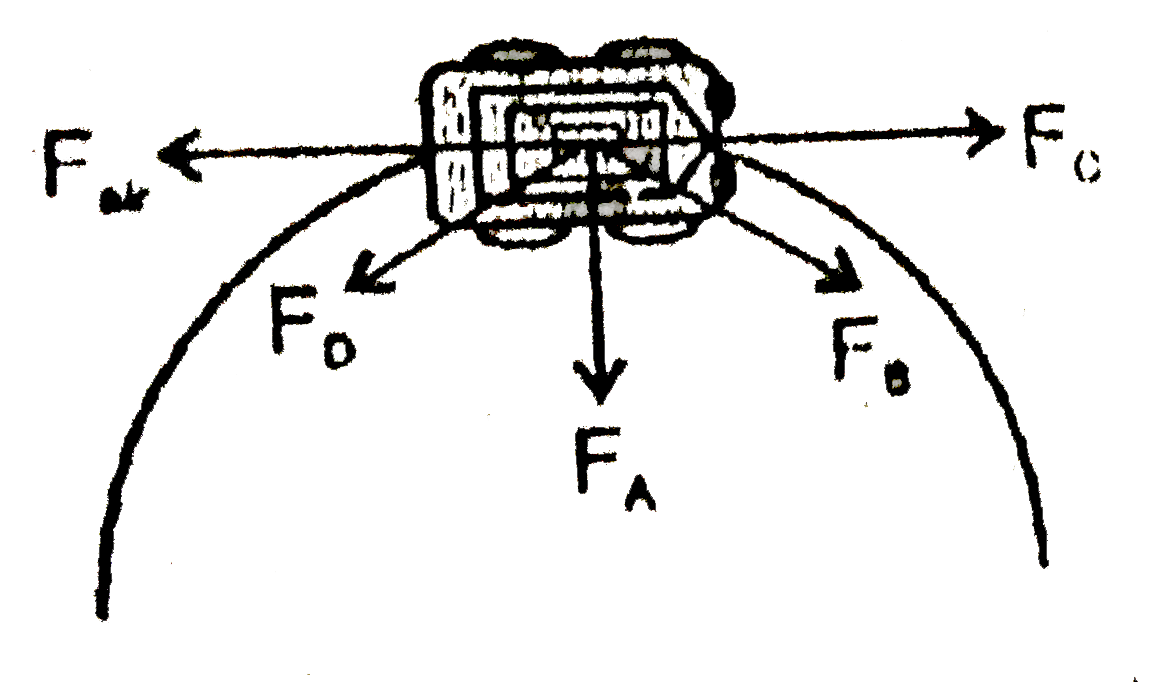In Fig a car is driven at constant speed over a circular hill and then into a circular valley with the same radius. At the top of the hill, the normal force on the driver from the car seat is 0. The driver's mass is 80.0 kg. what is the magnitude of the normal force on the driver from the seat when the car passes through the bottom of the valley?

The correct Answer is:1.57×103N
Step by step video, text & image solution for In Fig a car is driven at constant speed over a circular hill and then into a circular valley with the same radius. At the top of the hill, the normal force on the driver from the car seat is 0. The driver's mass is 80.0 kg. what is the magnitude of the normal force on the driver from the seat when the car passes through the bottom of the valley? by Physics experts to help you in doubts & scoring excellent marks in Class 12 exams.
Topper's Solved these Questions
- BOOK - RESNICK AND HALLIDAYCHAPTER - CIRCULAR MOTIONEXERCISE - PRACTICE QUESTIONS(SINGLE CORRECT CHOICE TYPE)40videos
CIRCULAR MOTION
- BOOK - RESNICK AND HALLIDAYCHAPTER - CIRCULAR MOTIONEXERCISE - PRACTICE QUESTIONS(MORE THAN ONE CORRECT CHOICE TYPE)6videos
CIRCULAR MOTION
- BOOK - RESNICK AND HALLIDAYCHAPTER - CIRCULAR MOTIONEXERCISE - CHECK POINTS6videos
CIRCULAR MOTION
- BOOK - RESNICK AND HALLIDAYCHAPTER - CIRCUITSEXERCISE - Practice Questions (Integer Type)3videos
CIRCUITS
- BOOK - RESNICK AND HALLIDAYCHAPTER - CURRENT AND RESISTANCEEXERCISE - Practice Questions (Integer Type)3videos
CURRENT AND RESISTANCE
Similar Questions
A car moves at a constant speed on a straigh but hilly road. One section has a crest and dip of the 250m radius.
(a) As the car passes over the crest the normal force on the car is half the 16kN weight of the car. What will the noraml force on the car its passes through th ebottom of the dip?
(b) What is the greatest speed at which the car can move without leaving the road at the top of the hill ?
(c) Moving at a speed found in part (b) what will be the normal force on the car as it moves through the bottom of the dip? (Take, g=10m/s2)View SolutionA car is rounding a flat curve of radius R=220 m at the curve's maximum design speed v=94.0km/h. What is the magnitude of the net force on the seat cushion from a passenger with mass m=85.0 kg?
View Solution
Knowledge Check
- Question 1 - Select One
The driver of the car was .....
ATsetan,BDaniel,CSherpaDNone of these. - Question 2 - Select One
In the following questions, sentences are given with blanks to be filled in with an appropriate word (s). Four alternatives are suggested for each question. Choose the correct alternative out of the four.
The officer _____ the car to speak to the driver.AstopsBhas stoppedCstoppedDhad stopped - Question 3 - Select One
Select the correct active form of the given sentence. Has the car been cleaned by the driver? (a) How has the driver cleaned the car? (b) Does the driver clean the car? (c) Has the driver cleaned the car? (d) Did the driver clean the car?
AHow has the driver cleaned the car?BDoes the driver clean the car?CHas the driver cleaned the car?DDid the driver clean the car?
In fig a stuntman drives a car (without negative lift) over the top of a hill, the cross section of a hill, the cross section of which can be approximated by a circle of radius R=250 m. What is the greatest speed at which he can drive without the car leaving the road at the top of the hill?
 View Solution
View SolutionA police officer in hot pursuit drives her car through a circular turn of radius 300 m with a constant speed of 75.0km/h. Her mass is 55.0 kg. What are (a) the magnitude and (b) the angle (relative to vertical) of the net force the officer on the car seat?
View SolutionWhat happens to the speed of a moving car when force is applied in the opposite
View SolutionA car moves at a constant speed on a road as shown in figure. The normal force by the road on the car is NAandNB when it is at the points A and B respectively
 .View Solution
.View SolutionA car travels with constant speed on a circular road on level ground. In the figure shown, Fair is the force of air resistance on the car. Which of the other forces best represent the horizontal force of the road on the car's tires ?
 View Solution
View Solution

